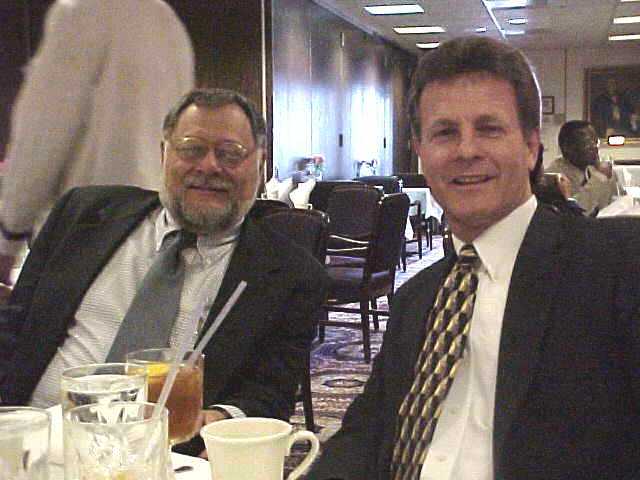GW President Stephen Joel Trachtenberg and Professor Jonathan P. Deason recently discussed the Environmental and Energy Management program over lunch a the GW Faculty Club. Trachtenberg, who is fully supportive of the program, expressed a special interest in the "high-tech" aspects of the program such as use of the Internet, computer modeling, high altitude imagery, remote sensing and other "state-of-the-art" technologies. He indicated that he is very much interested in enhancing the computer technology aspects of the curriculum. Deason and Trachtenberg also discussed opportunities to collaborate with related programs across the University.
President Trachtenberg described a number of actions that he has been undertaking to enable the University to capitalize upon the explosive growth of the high technology industries of the D.C. metropolitan region, especially the Northern Virginia area. Deason explained a number of E&EM innovations that fit in well with Trachtenberg's vision, such as our growing use of the Internet in teaching and information distribution (our new web-based E&EM newsletter is an example), new state-of-the-art courses such as our "Emerging Technologies in Environmental and Energy Management" course, and growing emphases on systems technologies.
Deason further explained the use of computer-based technologies on several E&EM research projects that
are being sponsored by federal agencies like the U.S. Environmental Protection Agency and the Federal Highway Administration. One example cited is the use of systems dynamics to better analyze impacts of transportation projects on wetland areas in order to improve development decisions.
After his lunch with President Trachtenberg, Deason indicated that he was pleased with top University support of the program. "From my vantage point, the University Administration is trying hard to keep on the cutting edge of rapidly advancing technology, and that has very positive implications for our program in the future."


